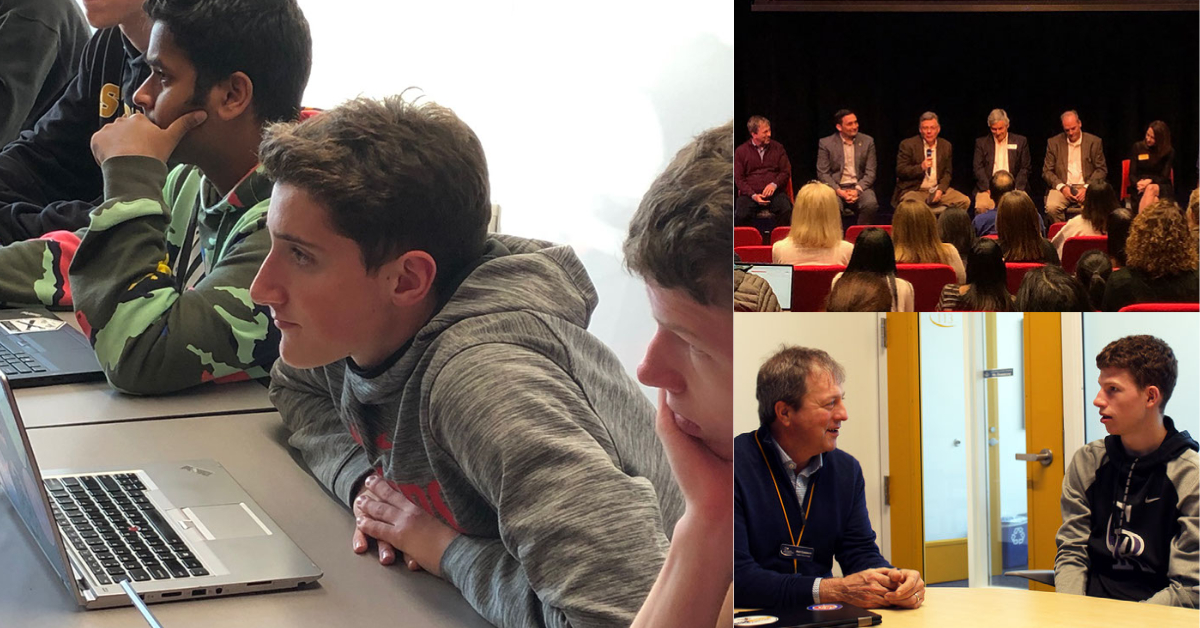
College Counseling Process Then and Now
By Bart Gummere, Associate Head of School for College Counseling & Alumni Relations
I think everyone is aware that the landscape of college admissions is greatly changed from even just 10 years ago, and certainly since the time most parents of high school seniors applied. We hear parents exclaim often, “Gosh, this seems much more complicated than I remember.” We reassure that in many ways it is not so different. Students do some self-reflection, consider options, eventually apply, hear some good news and bad and ultimately choose a place to go. With few exceptions, those who graduate from EPS do very well wherever they attend and are very happy with their choice. This synopsis of the path does mask a lot of complexities each student faces along the way, though.
While the process remains easily recognizable to those who went through it 30 years ago, the landscape is greatly changed. Maybe most dramatic is the availability of information. In 1990 when a student wanted to research a college, they had limited options. Many would go to the public library to find books, such as Barron’s College Guide, a tome of dry factual information—majors, number of students enrolled, sport teams, and most importantly an admission office mailing address. Interested students subsequently would send mail (through the post office!) to gain more information.
To illustrate the difficulty acquiring details then that are now considered basic, I’ll share a story. In the spring of 1984, in my first year as a college admission officer, I worked a large college fair in Boston, along with my boss Fred, the Dean of Admission. As we got ready for the onslaught of people about to enter the large hall, he took an index card and wrote a number on it. He then taped the card to his forehead. I asked incredulously, “what are you doing?” He just said, “you’ll see.” As each student or parent approached our table, at least half had the same initial question. “What’s your average SAT?” Fred would point at his forehead and then smile at me.
If that sounds a world removed from now, you are correct. The irreverence alone is unrecognizable in today’s highly charged, all-business version of college admissions. We actively coach students NOT to ask basic factual questions. Instead, they are taught to dig more deeply into more qualitative aspects of the college.
Thirty minutes on a university’s website today probably unearths more information than an entire year of research in 1990. And it isn’t just the students who gain a lot more knowledge in the process. Each institution now has the ability to track individuals as they search that website, and then tailor individual marketing outreach to each prospective student. The sophisticated nature of that interaction has grown immeasurably.
Are students any happier and more successful with their matriculation decision in today’s world? Google “too much choice” and you’ll uncover numerous articles on the anxiety that accompanies abundant choice. Our students are drowning in a flood of college information. There is an ever more complicated process of applying to colleges and significantly more competitive application pools at some colleges.
All this leads to a process that can be far richer than was once the case. It also can bring more stress. At EPS, our unique college counseling team designs a program that helps students and parents navigate this complexity with confidence. We dedicate more people and time than any other independent school college counseling program with which I am familiar.
We also try to be consistent in our messaging. This is an important step in each student’s life. It also will work out. I often say, “the act of making the choice is more important than the choice itself” and I believe that deeply. Students learn a lot in this 18-month project; much of the most valuable knowledge is not about colleges but instead is about themselves, their talents, and aspirations.

